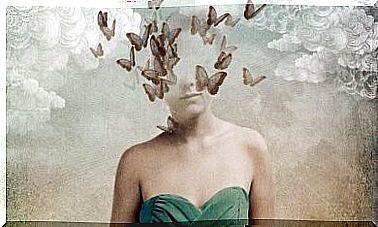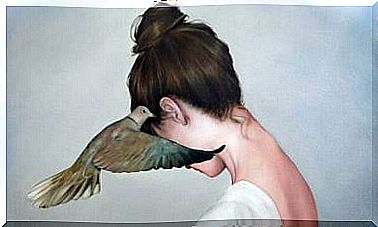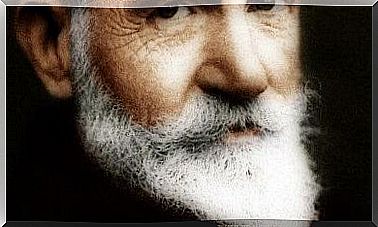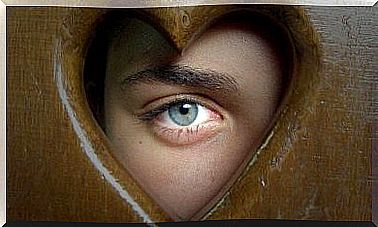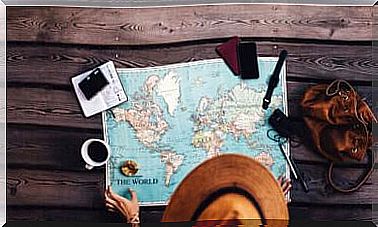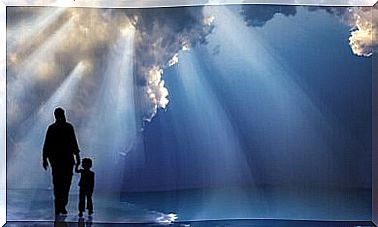Mission, An Example Of Character Building
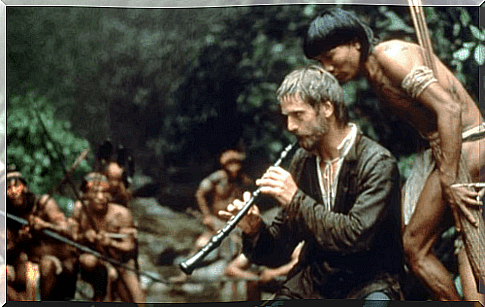
The 1986 feature film Mission , directed by Roland Joffé , enjoyed wide recognition from critics and viewers. No wonder: starting from the soundtrack of “our” Ennio Morricone to the superb interpretations of Jeremy Irons, Ray McAnally or, above all, Robert de Niro. Not to mention the costumes or photography, which can even win the Academy Award.
But the charm of this film surpasses purely cinematographic judgments, managing to draw, with excellence, one of the darkest steps in the history of mankind. The “Conquest” of the Americas by the Spaniards.
The two main theaters that form the background of the plot are the forest and the Jesuit missions in Latin America (also called “reductions”). The story is presented with great fidelity, both architectural and social. Among the various scenes of Mission, the community organization of these reductions stands out and the great contradictions between violence and faith, between conquest and submission, between invasion and communication, in which the only victims are the poor local tribes, those of the Guaranì.
The Jesuit reduction in Mission
The border position occupied by these communities, together with the expansion of the Spanish and Portuguese colonial empires, is the trigger for the conflict in the film. Reference is made openly to the Madrid Treaty of 1750 between both powers, which sanctions the change of dominion of these territories and the disappearance of the reductions. As part of the political conflict, other historical elements are highlighted, such as the references to the Marquis of Pombal or the French utopian socialists, which emerge thanks to the dialogues that Joffé puts in the mouths of his protagonists.
The laws of the Spanish Indies also take their place in the plot, combined in this case with the deplorable violations sometimes carried out by the Spanish colonial authorities. The kidnapping of indigenous slaves, who were legally subjects of the Hispanic crown and could not be subjected to servitude, is a reality that appears in many cases. The remoteness of state control from the colonies has inevitably facilitated the abuses of some officials, governors or greedy entrepreneurs.
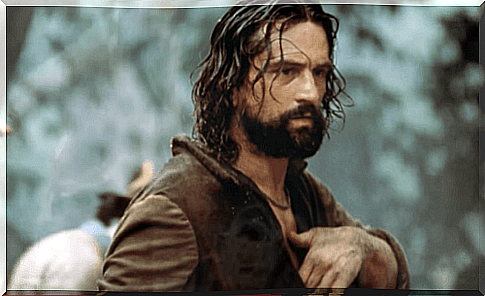
Missionaries and natives
But the success of the film is not based on these elements or on the excellent recreation of the celebrations and customs of the mestizo society of the colonial capital. The plot progresses with its characters, effectively constructed and functioning perfectly as archetypes of the men of their time. At the same time, they embody timeless qualities and emotions that connect easily with the viewer.
Among all the characters, we must highlight two: Father Gabriel (played by Jeremy Irons) and Rodrigo Mendoza (Robert de Niro), who shape the contrast sought by the director. The approach to the historical past can generate problems of understanding towards its protagonists. The risk is to fall into the error of analyzing their behaviors and their motivations on the basis of our current, modern vision, forgetting that time barrier that inevitably separates them from us.
Gabriel and Rodrigo, two sides of the same coin
Perhaps even more difficult to understand in our day is the reaction of the protagonists to a first contact with the cultures and peoples on the other side of the ocean, so different from all that is known. Despite all social changes, the raw material remains constant: and we are talking about the human mind.
The approach to the two archetypal characters of Joffé in Mission is masterful, both find their full definition already in the first contact with the Guaranì. Precisely this element of the plot is fundamental to building all the personalities of the film.
The man of God
The way in which Father Gabriel attracts the attention of the natives is amazing. The monk tries to conquer them by using a universal language, that of music, by playing a simple wind instrument.
The beauty and melodies emitted by his oboe establish a communication between those who cannot use the same language or the same gestures. Even the instinctively violent response of the unknown Guaranì warriors stops and is nullified by this “trick” that presents us with Gabriel in all his compassion.
The whole plot will be marked by this love and desire to connect with what is different, which generates a mutual positive feeling. Indeed, this was one of the faces that many Europeans showed to Native American populations.
Like Father Gabriel, many religious came to America with the intention of teaching their inhabitants what, to them, was most precious. The adventurous and potentially deadly components of these missions may be shocking to us today, but they make sense when we think about how important it was for these men of God to be able to convey His message, His word.
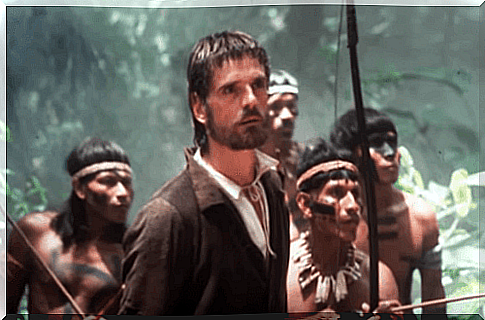
The warrior in Mission
Rodrigo’s first contact with the Guaranì has nothing to do with the one just mentioned. The warrior appeals to another universal language and uses a different tool, on this occasion full of tensions.
The violence of his arquebus frightens the natives who understand that it is an invincible weapon, far more powerful than their bows. This same violence will mark the perdition of the character, and Gabriel’s compassionate response and the redemption of the Guaranì.
In the long run, greed will be replaced by despair as the engine of a new military confrontation. Armed conflict was a constant at the time, and even Jesuits sometimes engaged in defensive wars. Harnessing a delightful musical wink, in the ending of Mission , Joffé shows (and celebrates) the immortal victory of men like Father Gabriel.
